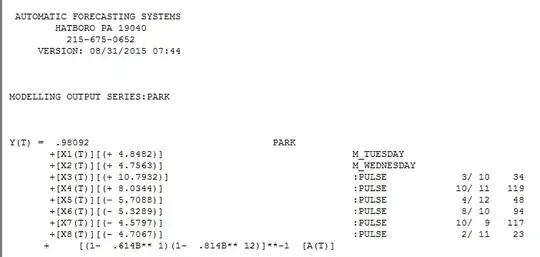Please consider the snippet below out of Bishop's book on PRML.
According to my understanding of an ellipse, the radii are $\sqrt\lambda_{1}$ along the horizontal axis ($w_1$) and $\sqrt\lambda_{2}$ along the vertical axis ($w_2$).
When looking at Fig. 3.15, the radius along the $w_1$-axis is larger than the radius along the $w_2$-axis.
Therefore, I would say that $\lambda_{1}$ is larger than $\lambda_{2}$
The text in Section 3.5.3, however, claims the opposite. Where did I make an error?
Thanks for any pointers or clarifications!
